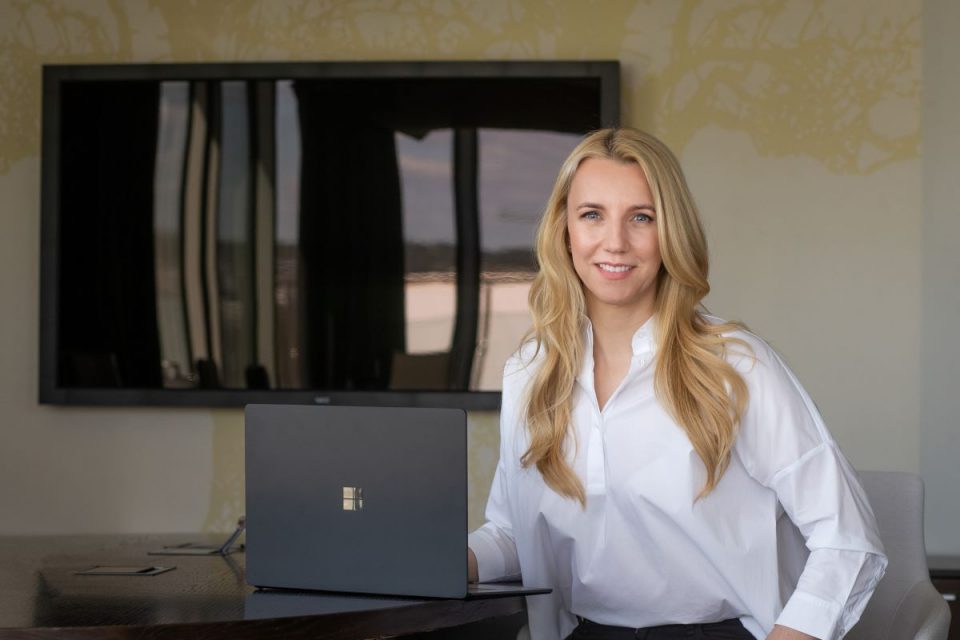Accessibility is crucial to Microsoft’s mission of empowering every person and every organization on the planet to achieve more. With over 1 billion people with disabilities worldwide, Microsoft continues to develop new technologies to make everything more accessible to people with disabilities. In a recent interview, Vaida Sapole, Country Manager of Microsoft Baltics, shared her thoughts on accessibility, discussed the outcomes of the Innovate with Accessibility Forum, and highlighted the significance of accessibility solutions.
Microsoft is tech company. How and why is Accessibility one of the top priority topics for the company?
With more than 1 billion people with disabilities in the world, Microsoft believes that accessibility is essential to delivering on the mission to “empower every person and every organization on the planet to achieve more”. Technology is developing to provide more accessible opportunities for all people. If only 1 in 10 people who are experiencing a form of disability have access to the assistive technology they need, it means that the majority can’t fully participate in our economies and societies. Microsoft is continuously developing new technologies to make everything more accessible to people with disabilities; and we always ask ourselves how we can expand the opportunities for people with disabilities to be better at school, at home, at work. And then the partnerships, because a company or an organization cannot solve the accessibility issue itself, it needs to partner with others, to be challenged and to learn from each other.
You were hosting Innovate with Accessibility Forum recently, can you share some key points and conclusions?
Forum united Baltic countries, and the importance of accessibility matter has been recognized, the governments and companies shared their stories, we talked about solutions and tools, and about future plans and initiatives. The European Accessibility Act was adopted by the European Union in 2019. Whilst products and services covered need to comply with the Directive from June 28, 2025, onwards, EU countries are now implementing it into their national laws. This Act aims to make products and services more accessible to people with disabilities and elderly people in the EU. It applies to a wide range of products and services, including computers, smartphones, ATMs, e-books, transportation services. This Act is expected to benefit over 80 million people with disabilities in the EU by making it easier for them to access and use products and services. It is important that accessibility matter stays on top of everyone’s mind, and we of course excluded the option to wait for European Accessibility Act to become valid in 2025. There is no time like the present to change our world, so let’s start right now and make it better for everyone. The power of technology lies in solving challenges. Microsoft will continue to create accessible tools and solutions and continue to participate in the discussions on how governments, organizations, and businesses can transform themselves to be ready to provide opportunities to everyone with any disabilities.

What solutions mentioned in Innovate with accessibility forum would you point out as the most significant when it comes to accessibility?
In Estonia, there is a state Virtual Assistant – Burokratt. This AI project is listed in the global top 100 by UNESCO. The Estonian people have gained many benefits from Burokratt, as it allows them to finish everything regarding the bureaucracy in more effective way. Also, the future plans are in expanding its features by implementing “the speech to text” and “text to speech” and sign language, as well. The Latvian company Tilde, for example, developed speech synthesis solution that allows people to read physical books, tools to make websites accessible to people with disabilities – multilingual options and adding voice to the website content, including image descriptions, automatic subtitling for video content etc. One of their most recent initiatives is a solution that helps pupils with hearing impairments. How accessible is your company to fellow employees? Many people don’t know this, but joining Microsoft requires mandatory accessibility training. So, 100% of new hires must go through Microsoft accessibility training. We have also started offering higher level training, which 40% of our employees in Central and Eastern Europe have passed. Specifically, in Latvia, 60% of our employees have passed both basic accessibility training and higher levels, obtaining a unique Accessibility in Action Badge, which requires extra effort in learning. In April 2021, we started working on a five-year action plan to accelerate the development and implementation of accessibility solutions.
Disabilities as – poor vision or lack of vision, hearing impairment or loss, and movement limitations are often discussed, but there are also various visual impairments, such as difficulty reading printed texts. Can you tell us more about solutions for these kinds of disabilities?
The Immersive Reader is a well-known tool among those with dyslexia, as it aids in maintaining focus while reading. People with dyslexia often struggle with concentration, so the reading tool offers features like letter magnification and focus to facilitate reading documents. It’s worth mentioning that catering to individuals with disabilities presents a valuable opportunity for entrepreneurs and developers. In fact, a few years back, we organized a global hackathon that brought together startups, and it was there that the concept of a reading tool first emerged. Developing something that promotes accessibility cannot be achieved in isolation. At Microsoft, we recognize this and collaborate with a wide range of stakeholders, including disability communities, governments, clients, and partners who identify potential opportunities. Together, we strive to push the boundaries and expand our efforts in this area. Ultimately, our commitment to inclusion and the involvement of individuals with disabilities makes our society more resilient and stronger as a whole.





